Israel’s Food Points Are Not Just Death Traps – They’re an Alibi for the Starvation of Gaza
When mass starvation grips a community, something rare and terrible occurs. Starvation is not only the biological phenomenon of the body wasting away. It’s also the death rattle of society. Famine is the sight of people scavenging for food in a garbage heap. It’s a woman cooking in secret, hiding food from her starving cousins. It’s a family selling its grandmother’s jewellery for a single meal, their faces blank and emotionless, their eyes glazed. This is the degradation, the humiliation, the shame – and, yes, the dehumanisation – that happens when human beings scrabble for food like animals.
This is a reality that no statistics can capture. And the methods for measuring food emergencies and assigning them grades – “famine” being the worst – break down when society breaks down in this way.
But just as an experienced physician can diagnose a fever without having to send blood samples to the laboratory, veteran humanitarian workers, who witnessed the depths of human suffering in Biafra in 1969 or in Ethiopia in 1984, recognise these symptoms when they see them.
And they see it in Gaza today.
Turn to the statements of the Gaza Humanitarian Foundation – the US and Israel-backed organisation that began operating in May – and you enter a different world. The GHF presents itself as a professional, compassionate operation designed for the 21st century. You will see images of order and efficiency, and a proud announcement that it delivered more than 2m meals yesterday from its four “secure distribution sites”.
And alongside the pictures of those starving children, of women collapsing from hunger, there are also pictures of healthy young men. In contrast to the footage, filmed by Palestinian journalists, of the desperate scramble for the little aid still provided through the UN, the GHF has images of orderly distributions, of its own workers holding the hands of Palestinian children.
Israeli spokespeople insist that the United Nations has hundreds of trucks of food inside the Gaza perimeter that it refuses to distribute.
But that rosy picture doesn’t stand even the simplest scrutiny. There are four reasons why it’s at best an improvisation by amateurs and at worst a cover for the crime of ongoing mass starvation.
First, the numbers just don’t add up. In April, the Food and Agriculture Organization of the UN calculated the food stocks remaining in Gaza, after 18 months of siege and war, and two months of total Israeli blockade. It estimated that food availability would fall to only half what’s needed to sustain life at some point between May and July. That means that the aid effort needs to cover the entirety of Gaza’s food needs. Two million meals a day is less than half of what’s needed. The GHF rations may have slowed the march of starvation, but not by much.
Second, you can’t relieve famine by numbers alone. The GHF system is like standing at the edge of a big pond and feeding the fish by throwing breadcrumbs. Who gets to eat its rations?
Starvation strikes the vulnerable minority. The metric used by the UN for determining when acute food insecurity is at famine levels is when 20% of families are facing extreme food shortage. Starvation strikes the weakest, not the strongest.
Over the decades, humanitarian programmes have worked out how best to target the poorest, such as women without their husbands, looking after several children and perhaps elderly parents as well. It’s the last mile of aid delivery that counts.
The GHF runs four ration stations. Three are in the far south of Gaza in the ruins of Rafah, one in central Gaza. They’re all in military zones. They open for short periods and short notice. To get these rations, people must camp out in the rubble – ready to rush to the gates at a moment’s notice, and running the gauntlet of the Israel Defense Forces’ military posts. They know that the only means IDF soldiers have for crowd control is firing live ammunition – even when they’re not shooting to kill.
When the GHF speaks of “secure distribution sites”, it’s referring to how it controls its packages up to the point of handing them over, not to how it safely delivers them to the neediest. Dozens of aid seekers are killed each day trying to reach these sites.
How will the overstressed mother of hungry children, or elderly or disabled people, join this stampede? How would they run the gauntlet not only of those military posts but also of the gangsters keen to steal the most valuable foodstuffs for themselves, or to sell in the market? The GHF has no idea who is eating the rations. Theirs isn’t a formula for feeding the poorest. It’s the law of the jungle.
Third, the assistance must be designed for what people really need. Top of the list are specialised foods to care for malnourished children who cannot consume regular meals, such as Plumpy’Nut, a ready-to-use therapeutic food.
The GHF ration box typically contains flour, pasta, tahini, cooking oil, rice and chickpeas or lentils. No baby food. No Plumpy’Nut. And it has no trained nurses or nutritionists in the community to actually provide therapeutic care to starving children.
Consider the desperate mother who’s literally at the end of the food chain: how will she cook the rations she gets? How does she find clean water? Israel has reduced water availability to a small fraction of need, and is bombing the remaining desalination plants. What can she use to make a fire? Without electricity or cooking gas, she may burn garbage to heat food.
And last and most tellingly, a truly humanitarian operation supports the afflicted people, respecting the dignity of those in need, working with the communities. The GHF, essentially, does the opposite: it humiliates and undermines.
The social breakdown that we are witnessing, the degrading of human beings, is not a byproduct of the harm that Israel is inflicting. That’s the central element of the crime: destroying Palestinian society. The government of Israel shows no indication that it cares in the slightest whether Palestinians live or die. It wants to avoid the stigma of being accused of starvation and genocide, and the GHF is its current alibi. Let’s not be fooled.
Related article:
Murder Not Crisis - Why Israel's Starvation of Gaza Is Exceptional in a Global Context.
Adam Tooze
Chartbook
Jul 27, 2025
For many months, it has been beyond reasonable doubt that the Israeli government, the Israeli military, sections of Israeli politics and society as well as their aiders and abetters abroad, have been deliberately starving the population of Gaza with a view to forcing the population either to flee or to face intensifying misery and ultimately an agonizing death. There is clear evidence of deliberate intent going back to 2023. This clearly warrants charges of genocide.
Those who style themselves “defenders of Israel” will be quick to insist that, in fact, there is a feeding operation in Gaza. But, as the famine historian and aid expert Alex de Waal demonstrates in powerful piece in the Guardian, “Israel’s food points are not just death traps – they’re an alibi … The Gaza Humanitarian Foundation system is like standing at the edge of a big pond and feeding the (starving) fish by throwing breadcrumbs. Who gets to eat its rations?” Air drops of food, are simply more of the same.
Ethnic cleansing by means of starvation is the actual policy.
Anyone interested in the history of famine as a political weapon would do well to consult de Waal’s harrowing history on the the topic.
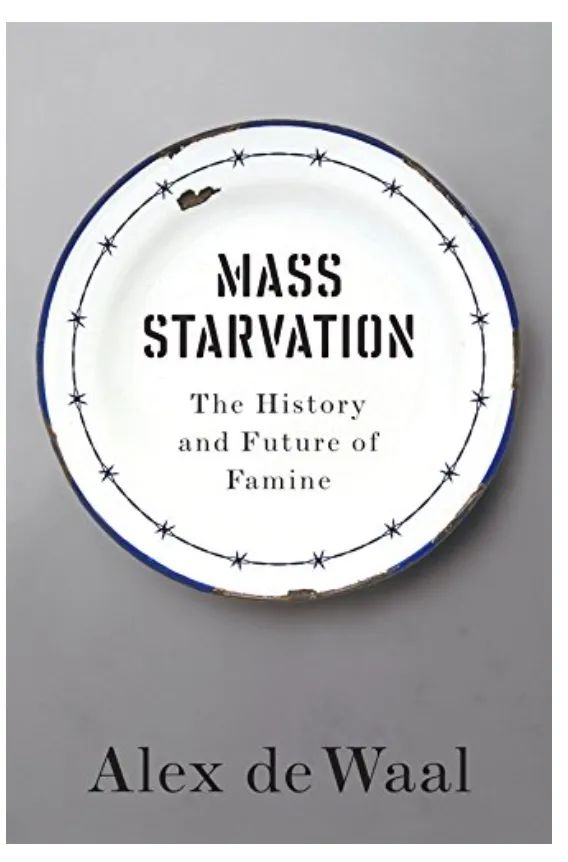
As he shows, deliberate starvation, which was at the heart of Raphael Lemkin’s original discussion of genocide, born out of the Nazi occupation of Poland in the 1940s, was subsequently marginalized in our understanding of 20th-century horror.
When I resolved to tear myself out of my Asian cocoon and write this piece, I first had in mind to write something “historical” based on de Waal’s book. I soon realized that I don’t have the stomach for that kind of history right now. This is not a moment for chin-stroking arguments over the politics of historical comparison etc etc.
Let us stay with the violence in the here and now.
To anticipate another objection commonly made in Israel’s “defense”. Obviously, Gaza is not the only place in the world where people are suffering and starving in the summer of 2025. Nor is it the only place where hunger is being used as a political weapon.
If you have been in these conversations, you will have heard the retort: “Don’t criticize Israel, don’t even mention the criminal policy of its government, unless you are also willing to discuss horrors being inflicted elsewhere.”
This is confusing because Israel also frequently claims exceptional status, especially on the basis of its origins in the aftermath of the Holocaust, whose exceptionality is also emphatically asserted. But, let us side-step that rabbit hole of confusion and bad faith and take up the challenge of generalizing the critique. Let us place the policies of Israel’s government in Gaza against the global panorama of misery, war and starvation at this moment.
Anyone who is seriously interested in this question and is not simply engaged in obfuscation is invited to consult the overview of “hunger hot spots” around the world helpfully compiled for us by the UN FAO and the World Food Programme.
Here is the map of acute hunger worldwide expected for the summer of 2025. And here is the horrifying thing. There are roughly 152 million people worldwide at serious risk of hunger and famine this summer, outside Gaza. The majority, by far, are in Sub-Saharan Africa. Myanmar is the only major hot spot in Asia.
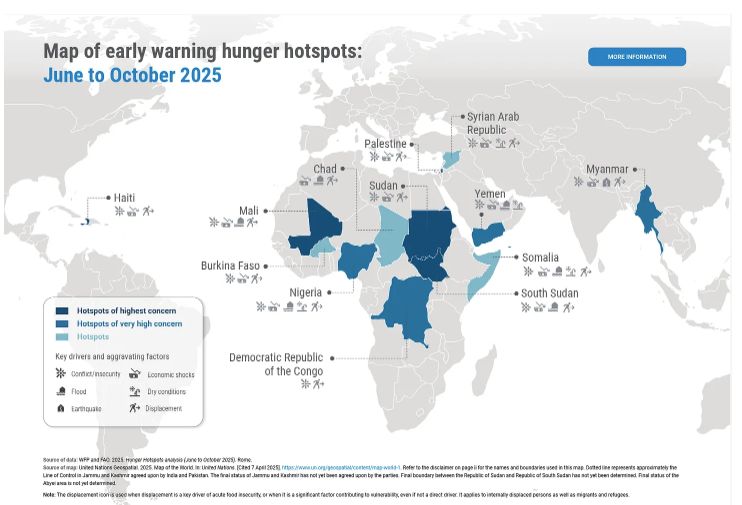
The common denominator of all of these zones of suffering, is armed violence.
As the FAO/WFP put it:
The Sudan, Palestine, South Sudan, Haiti and Mali remain at the highest concern level, necessitating the most urgent attention. Yemen, the Democratic Republic of the Congo, Myanmar and Nigeria are classified as hotspots of very high concern and require urgent attention to save lives and livelihoods and for preventing further deteriorations. Other hotspots are Burkina Faso, Chad, Somalia and the Syrian Arab Republic. Armed violence remains the primary driver of acute food insecurity in 12 of the 13 hotspots. In all the hotspots of highest concern, widespread and escalating armed violence is a major driver of the deterioration in food security, contributing to Catastrophe (Integrated Food Security Phase Classification /Cadre Harmonisé Phase 5) outcomes in affected areas. In the Sudan, Famine-like conditions (IPC Phase 5) may persist due to the ongoing conflict and the approaching lean season.* In the Gaza Strip, the risk of Famine is becoming increasingly likely due to the protracted and large-scale military operations and the fact that humanitarian agencies are unable to provide adequate assistance. In South Sudan, subnational violence and political tensions are compounding macroeconomic challenges and flood risks. In Haiti, record levels of gang violence and insecurity are forcing mass displacement and obstructing humanitarian operations, perpetuating catastrophic food insecurity among displaced populations in the Port-au-Prince metropolitan area. In Mali, persistent conflict and very high access constraints in northern and central regions continue to disrupt food systems and limit assistance.
This is, to say the least, politely phrased.
Sudan, South Sudan, Myanmar, DRC are all in civil war. In Haiti there is anarchy. All of these situations might be reasonably described either as zones of zones of polycrisis, or as regions of chronic poverty (Northern Nigeria, for instance) - which itself demands a deeper explanation.
By contrast, “the protracted and large-scale military operations” in Gaza that are responsible for the famine there, are not manifestations of a crisis. They are being conducted with full deliberation by Israel, a rich and fully sovereign state. Food supplies to Gaza, which are fully within Israel’s grip, are being deliberately “regulated” to a totally inadequate level. Meanwhile, water desalination facilities have been targeted by smart bombs. There is no fuel for cooking. In waging its campaign in Gaza, Israel has had the unstinting and highly public support of the mainstream of US politics and that of many countries in Europe. These are not deniable operations, as for instance the UAE’s engagement in Sudan, but publicly celebrated multi-billion dollar “aid packages”.
In recent months, the political establishment in both Europe and the US has become “troubled” by images of Palestinian children dying of hunger. In reaction, they resort to grotesque euphemism to avoid the obvious fact that what is happening in Gaza is the result not of “crisis” but of deliberate Israeli policy.
Witnessing the catastrophic hunger and suffering of civilians, especially children, women, the sick and elderly, in Gaza has been heartbreaking. The crisis in Gaza must be met with an immediate and drastic surge in life-saving resources, such as desperately needed food, water,…
— Sen. Cory Booker (@SenBooker) July 26, 2025
Politicians in the USA and in Europe dare not say out loud what the Israeli newspaper Haaretz says every day in its headlines:
Death by starvation in Gaza is not the collateral, unintended consequence of an obscure, anonymous, amorphous crisis. It is the results of deliberate policy on the part of the Israeli government, bent on using the resources of a highly sophisticated state to render Palestinian life in Gaza impossible.
Around the world there are eleven places where more people are at serious risk of hunger than in Gaza, but what this wider view of global famine reveals is not that Gaza is “normal”, but precisely the opposite. Being the result of deliberate policy by a powerful state, commonly regarded as belonging to the exclusive club of “advanced economies”, the mass starvation in Gaza in the summer of 2025 is quite unlike that anywhere else in the world.
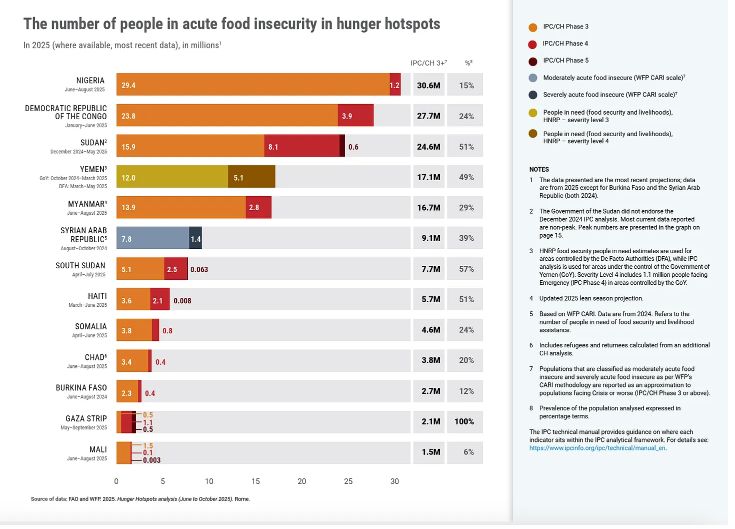
This exceptional quality is further emphasized if we ask simply, what percentage of the Palestinian population in Gaza is affected.
In any assessment of the deliberateness of mass killing this is a key index. It is often cited to demonstrate, for instance, the difference between the killing by the Nazi occupiers of Poland of Jews and non-Jewish Poles. Both projects of mass murder were intense, but the Nazi extermination of Jews in Poland clearly aimed, from the outset, at total extermination.
Across the hunger hot spots of the world in 2025, what is the percentage of the population that is at risk?
In Nigeria - mainly in the North - it is one sixth of the population. In Myanmar and the DRC it is roughly a quarter of the population. In Yemen, Sudan, South Sudan and Haiti - the places most commonly cited in arguments about the application of “special standards” to Israel - the share of the population at risk is between 49 and 57 percent. In Gaza, the share is 100 percent. The risk of famine is total.
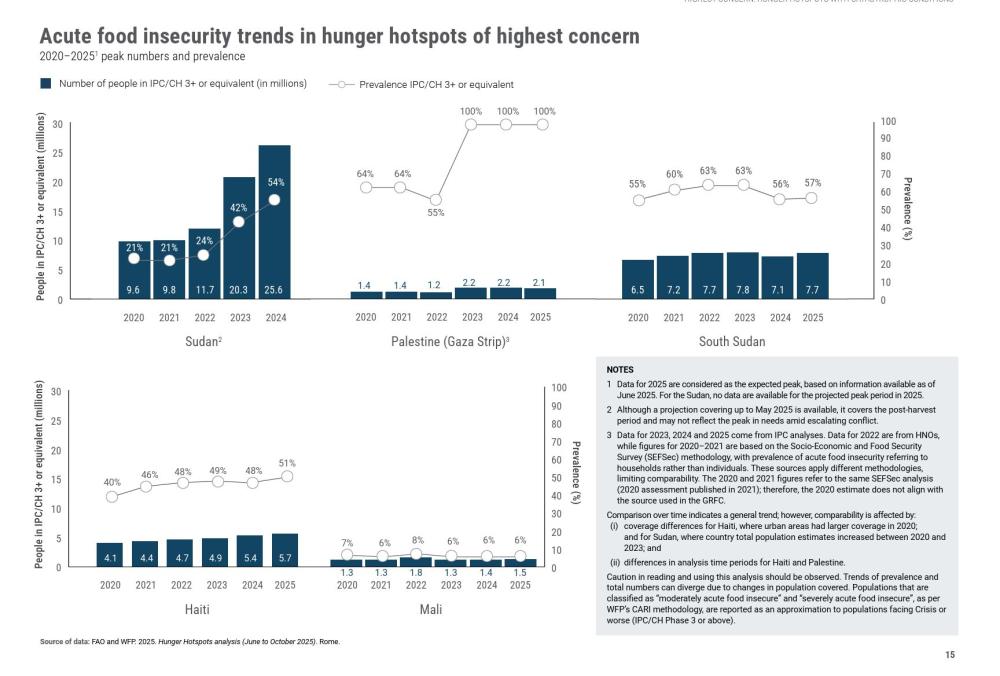
As the FAO and WFP put it:
According to the IPC analysis released in May 2025, the entire population of the Gaza Strip (around 2.1 million people) were projected to face Crisis or worse (IPC Phase 3 or above) levels of acute food insecurity between May and September 2025. This includes 470 000 people in Catastrophe (IPC Phase 5) and over one million in Emergency (IPC Phase 4).267 Even if essential supplies are permitted to enter, the quantity, distribution mechanism and timing may be inadequate to prevent a rapid and uncontrollable collapse into famine.268 Concerns remain extremely high, as the key drivers of food insecurity continue to deteriorate. Households are increasingly resorting to extreme coping strategies, including collecting garbage to sell for food. Observations reveal that social order is breaking down.
A condition of total, all-inclusive starvation is highly unusual. No doubt, the reality on the ground continues to exhibit gradations of inequality and hierarchy not captured by the UN statistics. But this finding points once again to the exceptional circumstance of Gaza, which are those of a siege, a prison or a ghetto. And within that space a horrifying pressure is being applied. As de Waal remarks:
“When mass starvation grips a community, something rare and terrible occurs. Starvation is not only the biological phenomenon of the body wasting away. It’s also the death rattle of society. Famine is the sight of people scavenging for food in a garbage heap. It’s a woman cooking in secret, hiding food from her starving cousins. It’s a family selling its grandmother’s jewellery for a single meal, their faces blank and emotionless, their eyes glazed. This is the degradation, the humiliation, the shame – and, yes, the dehumanisation – that happens when human beings scrabble for food like animals. This is a reality that no statistics can capture. ,,, The social breakdown that we are witnessing, the degrading of human beings, is not a byproduct of the harm that Israel is inflicting. That’s the central element of the crime: destroying Palestinian society.”
Anyone deflecting from the clear responsibility of the Israeli state for this mass starvation of two million people, anyone resorting to euphemisms about “crises” makes themselves complicit in this historic crime.
Alex de Waal is executive director of the World Peace Foundation at Tufts University in Massachusetts. He has been a humanitarian worker and written on famine and related issues for 40 years
About Guardian US
Covering American and international news for an online, global audience.
Guardian US is renowned for the Paradise Papers investigation and other award-winning work including, the NSA revelations, Panama Papers and The Counted investigations.
John Adam Tooze is an English historian who is a professor at Columbia University, Director of the European Institute and nonresident scholar at Carnegie Europe.

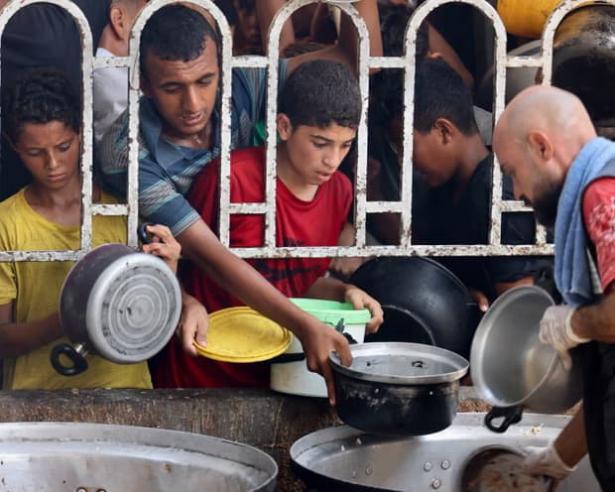
Spread the word